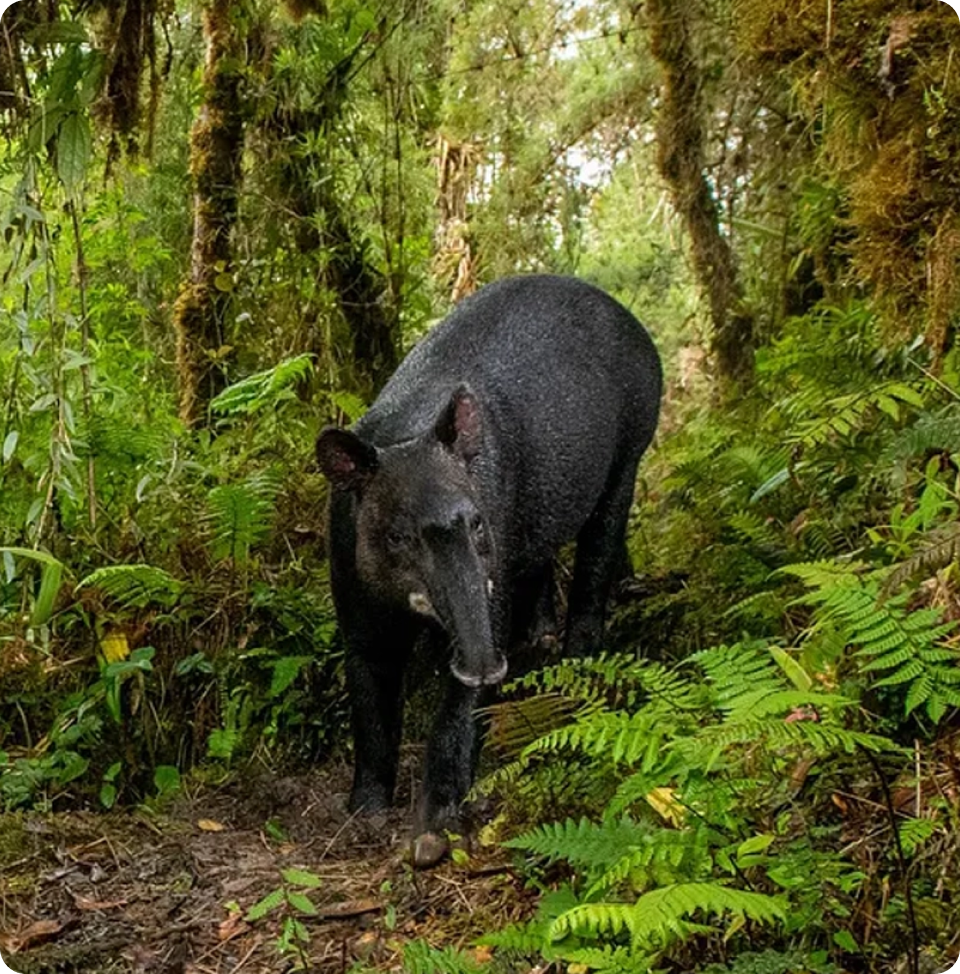
Mountain Tapir
The Andean Tapir plays a vital role in forest regeneration, however, poaching and deforestation have driven the species close to extinction.
Also known as the “woolly tapir,” derives its name from its thick, woolly coat, which serves as an effective insulator against cold temperatures. Adapted to elevations ranging from 2,000 to 4,000 meters, this small, woolly animal inhabits montane forests, páramos, and cloud forests across the Andes mountains.
The Mountain Tapir plays a vital role in forest regeneration, maintaining ecological balance by dispersing seeds through its diet. This process facilitates the growth and thriving of plants and trees. However, poaching and deforestation from mining and agriculture have driven the species close to extinction, with fewer than 2,500 individuals left in the wild. Their slow reproduction rate—breeding only once every two years—further threatens their survival.
Tapichalaca Reserve in southern Ecuador provides a crucial habitat and wildlife corridor, connecting Podocarpus and Yacuri National Parks, for species like the endangered Mountain tapir. The reserve is managed by Fundación Jocotoco, an Ecuadorian conservation group with a proven track record in protecting endangered species and preserving critical ecosystems.
If you want to be part of supporting the conservation of the Mountain Tapir and other Tapichalaca threatened species from extinction,
you can invest in the project by visiting the project button.
Explore more topics on our Resource page

